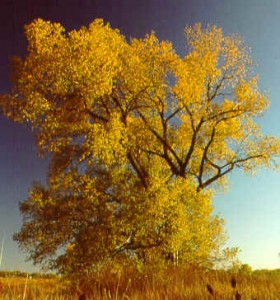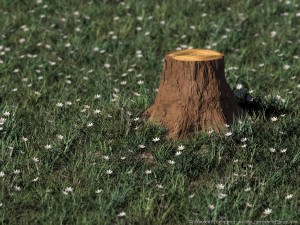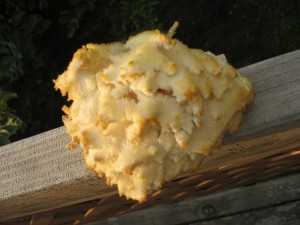Mushroom Cultivation Workshops are a great way to learn how to grow mushrooms and meet mycophiles. I have been to 2 different workshops through the Bioneers Conference.
The first one was with the Missoula Guru Larry Evans with the WMMA and the Fungal Jungal. The idea with this one was to pasteurize straw, and then inoculate the pasteurized straw with Oyster mushroom spawn. Everyone got to participate and take a bag of inoculated straw home ready to produce mushrooms.
The process was simple and straight forward. We broke a bale of straw up, and then ran over it with a lawn mower until it was chewed up to smaller pieces. A steel barrel of water was heated with a propane burner until boiling. Larry had fashioned a basket out of hardware cloth with a handle of wire. we stuffed the basket loosely with straw and plunged it into the boiling water. It stayed about 20 minutes with a brick on top to keep it down. The basket was raised, drained some, and then dumped on a clean tarp. It took about 3 batches to complete. The straw was spread out and allowed to cool to a tepid temperature.
The bags of spawn were then spread out over all of the straw and was mixed by hand being careful not to step on the tarp. The inoculated straw was then bagged up in small plastic bags, and nails were used to poke holes throughout the bag. The bags of inoculated straw were then taken home by participants to grow fresh mushrooms. The mycelium quickly consumed the straw in the bag and in about 2 weeks I had fresh oyster mushrooms to eat.
Me and about 30 other people were turned on to the simplicity and complexity of growing mushrooms. You could see it in their eyes, they were hooked for life. I have been playing around with oyster mushrooms since, and am constantly amazed at the aggressiveness of this mushroom.
If you get a chance to attend a mushroom cultivation workshop, I would highly recommend it.




